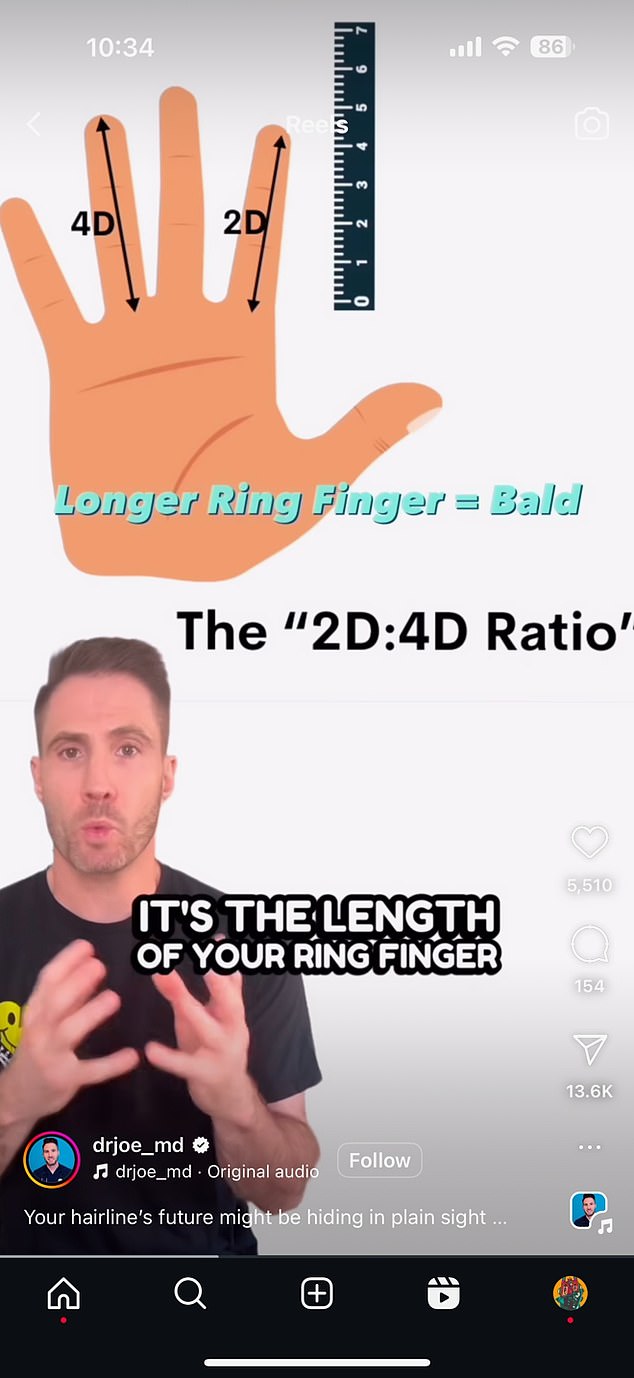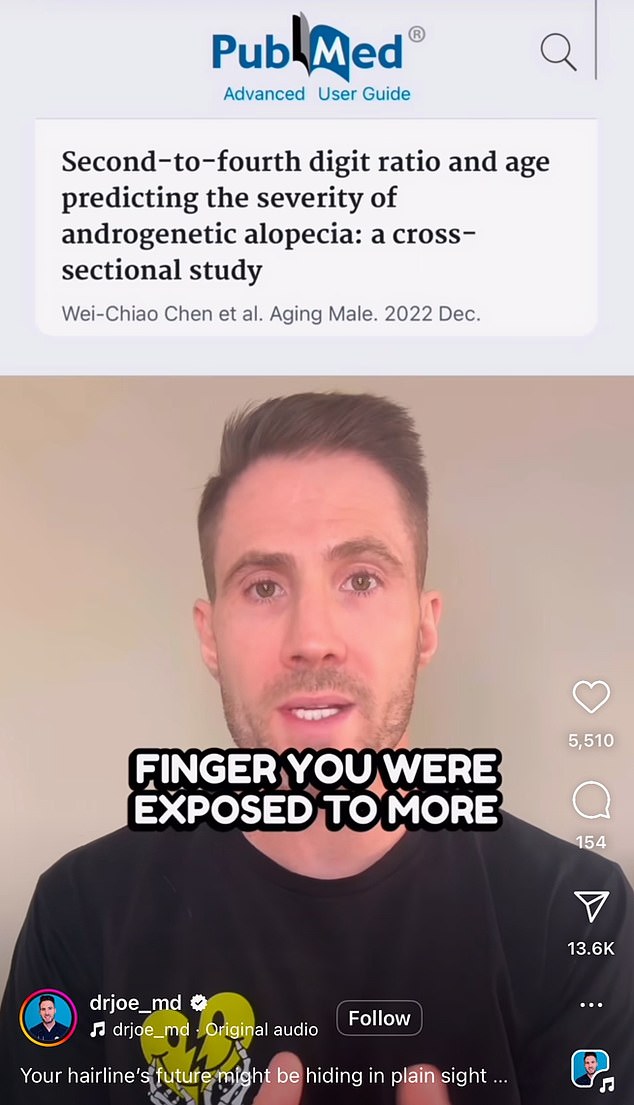There is a new, “incredibly easy” way to predict your chances of going bald, simply by looking at a specific physical characteristic, a leading doctor has claimed.
Dr. Joe Whittington, who has more than three million followers on social media, says it has “nothing to do with those myths about baldness,” like whether or not your mother’s father lost his hair.
According to the emergency room doctor, known as @drjoe_md on Instagram and TikTok, it’s as simple as looking at the proportions of your hand.
Specifically, it is what is known as the ‘2D:4D ratio’, or the ratio between the second and fourth digits, which is the length of the ring finger compared to the length of the index finger.
Quote a recent study in which Chinese researchers measured the 2D:4D ratio in men and then looked at the severity of male pattern baldness.
Also known as androgenetic alopecia, this type of hair loss tends to affect the crown and front of the scalp; It is known to be hereditary and can also affect women.
Experts found that the lower the 2D:4D ratio of right-handers (the longer the ring compared to the index finger), the higher the risk of androgenetic alopecia.
Dr. Joe states that those with the lowest 2D:4D ratio were six times more likely to suffer from baldness than those with the highest ratio.
There is a new, “incredibly easy” way to predict your chances of going bald, simply by looking at a specific physical characteristic, a leading doctor has claimed.

According to the ER doctor, the “2D:4D ratio,” which is the length of the ring finger compared to the length of the index finger, helps determine the risk of hair loss.
This “body clue” showed that a baby “had been exposed to more testosterone in the womb,” he added.
In the Instagram clip which has been viewed almost half a million times, Dr Joe explains: ‘As you age, hair follicles become more sensitive to (the) hormone DHT, wither and die.
‘Well, that testosterone you were exposed to before you were born makes you even more sensitive to DHT as you get older and (gives you) a greater chance of going bald.
“So when it comes to the question of whether you will go bald later in life, the answer may literally be in the palm of your hands…well, I guess in your fingers.”
The Chinese study included 240 men between the ages of 18 and 24. Most had a family history of pattern baldness.
In the UK, around 80 per cent of men and up to 40 per cent of women suffer some degree of baldness by the age of 50.
Hair loss usually begins around the age of 25 and severity increases with age.
While it is not a medical problem, it can cause psychological problems such as low self-esteem and even depression.

Dr. Joe Whittington says predicting baldness “has nothing to do with those baldness myths,” like whether or not your mother’s father lost his hair.

Hair loss usually begins around the age of 25 and, although it is not a medical problem, it can cause psychological problems such as low self-esteem and even depression.
The researchers behind the study suggest that finding the toe ratio may alert people to their risk and encourage them to seek treatment sooner.
There are two scientifically proven medical treatments that can combat pattern baldness.
The hormone blocking drug Finasteride, also known by the brand name Propecia, is effective in helping hair regrow in nearly nine out of ten men.
Meanwhile, another drug, minoxidil, sold as Regain in the UK and Rogain in the US, is 60 per cent effective in stopping hair loss and can also be used by women.
According to research, a combination treatment of finasteride and minoxidil is effective in more than 94 percent of men.
Minoxidil is available without a prescription, while finasteride can be prescribed privately; Neither are available for hair loss on the NHS.
Hair transplants, during which individual hairs are taken from an area of the scalp where they are thicker and surgically grafted to a thinned area, are also an effective treatment option, although they cost from £4,000.
Some studies have found that gay men were more likely to have a higher 2D:4D ratio (one index finger longer than the ring finger) than heterosexual men.
Some have hypothesized that this could indicate that prenatal exposure to testosterone could be related to the development of sexuality in men.
A similar phenomenon has not been observed in homosexual women; Other studies have found the opposite in men or no difference.


